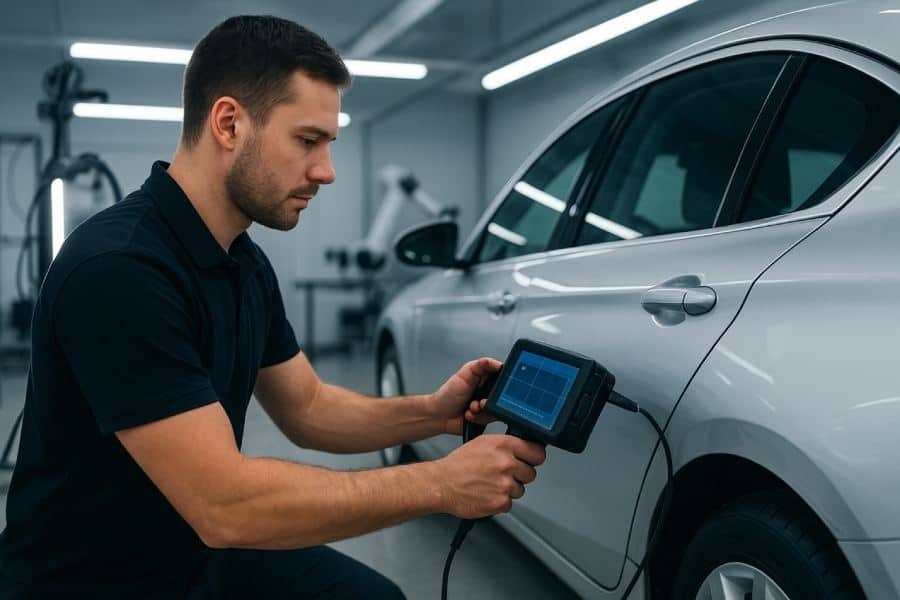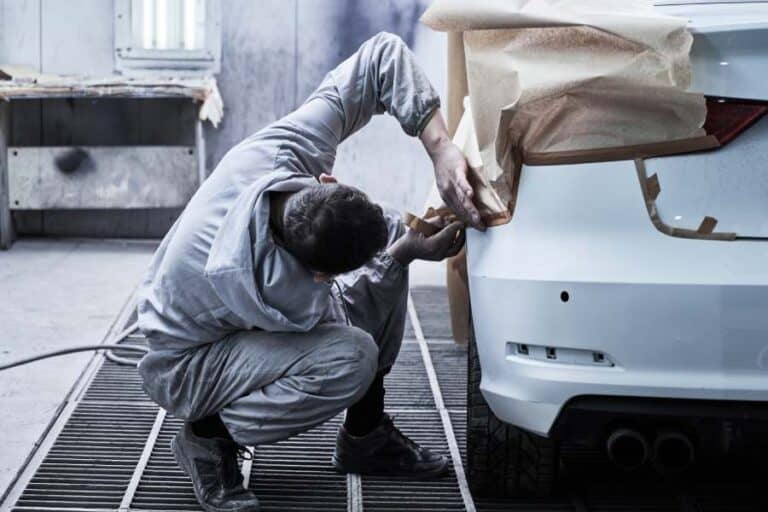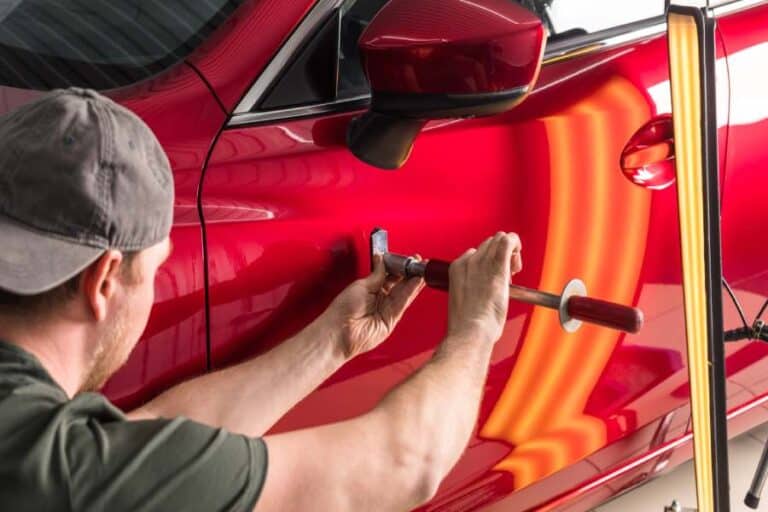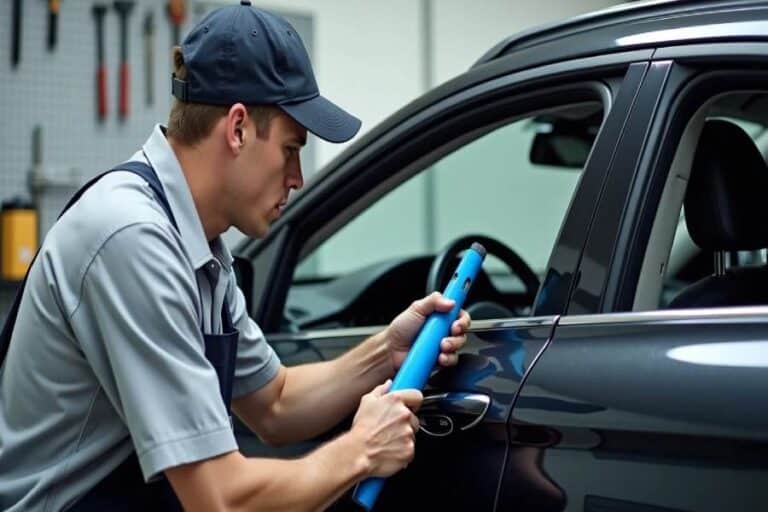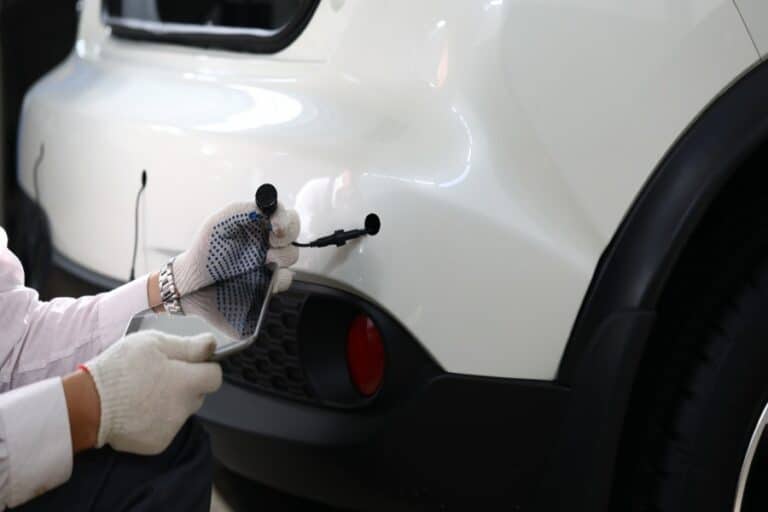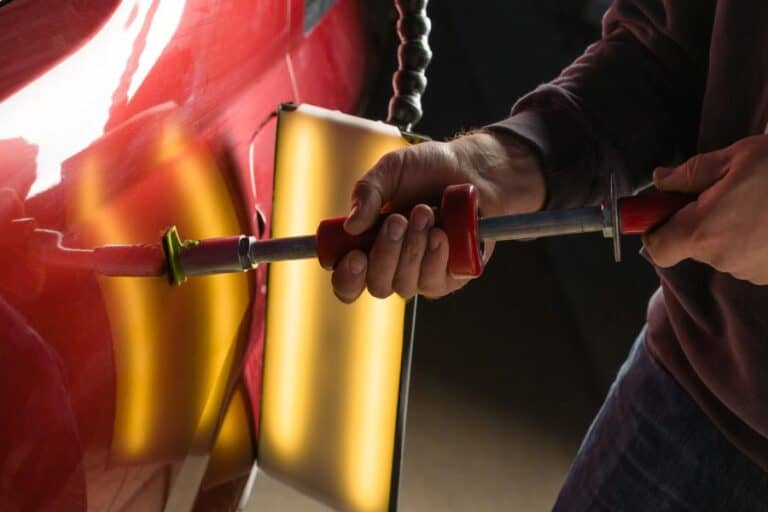Innovations In Dent Repair Technology You Should Know About
In the rapidly evolving automotive sector, it has become increasingly crucial to preserve both the aesthetic and structural condition of your vehicle. Recent advancements in dent repair technology are transforming the way experts fix cars, eliminating the necessity for expensive panel swaps or repainting jobs. These state-of-the-art methods allow for quicker, more accurate, and superior repairs compared to conventional techniques.
Paintless Dent Repair (PDR)
A major advancement in the field of dent repair is Paintless Dent Repair (PDR). Unlike conventional methods, PDR does not involve repainting or replacing vehicle panels. Instead, this technique utilizes specialized tools to gently reshape the metal from behind the panel, effectively restoring it to its original form while preserving the existing paint finish.
The advantages of PDR are extensive:
- Cost-effective: Reduces expenses by eliminating the need for paint and lowering labor costs.
- Time-efficient: Repairs that previously took several days can now be accomplished in just a few hours.
- Eco-friendly: Avoids the use of toxic paints and chemicals.
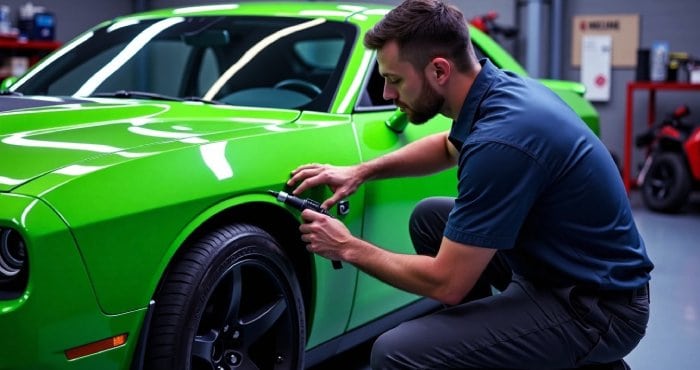
Recent technological innovations, such as LED line lights and digital dent mapping, have enhanced the PDR process. LED lights illuminate the fine details of a dent, enabling technicians to accurately pinpoint high and low areas for precise repairs. Additionally, digital mapping systems can offer a 3D representation of the damage, ensuring a perfect restoration.
Dent Pulling Systems
While PDR is ideal for fixing small dents, larger or more complex damage often calls for advanced solutions like modern dent pulling systems. These systems combine mechanical precision with controlled force, using tools such as suction cups, glue pullers, and slide hammers to carefully pull dents back into shape without harming the surrounding area.
Today’s dent pulling systems are more sophisticated than ever, featuring adjustable pulling force to prevent overstretching, laser guidance for pinpoint accuracy, and computerized controls that track progress in real time. Together, these innovations make dent pulling more efficient, precise, and safer for a vehicle’s structure and finish.
Laser Dent Removal Technology
Laser dent removal represents a cutting-edge advancement in the field of dent repair. Technicians utilize concentrated laser beams to directly address the affected metal, carefully heating it to facilitate expansion and reformation while keeping the surrounding paint and panel intact. This method ensures high precision and significantly reduces the likelihood of damage to the vehicle’s exterior.
The benefits of laser dent repair are noteworthy: it is non-invasive, extremely accurate, and can be executed in a matter of minutes. This technology is particularly advantageous for luxury vehicles with complex bodywork, where maintaining the integrity of the original paint and shape is crucial.
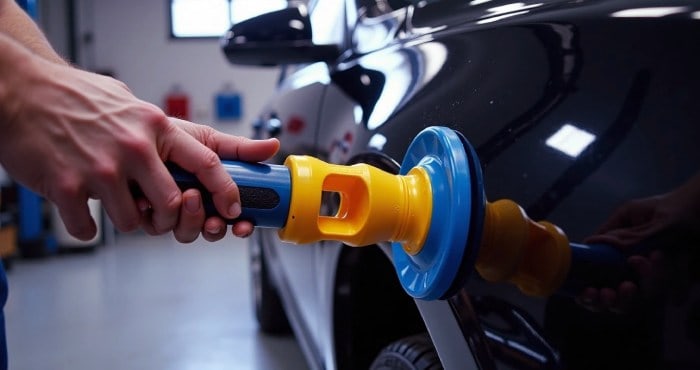
Smart Paint Matching Systems
While contemporary dent repair methods often remove the necessity for repainting, there are instances where touch-ups or refinishing are still needed. The introduction of sophisticated paint matching technologies has significantly improved the speed and precision of achieving a seamless color match.
These cutting-edge systems employ spectrophotometers to determine the precise shade of a vehicle’s paint, utilize software algorithms to create the ideal mixture, and use automated spray equipment for an even application. The result is a flawless, nearly undetectable repair that upholds the car’s original look and contributes to retaining its resale value.
Robotic Dent Repair Systems
With the ongoing advancements in automation, the dent repair sector is starting to incorporate robotic systems that feature sophisticated sensors and AI-based software. These cutting-edge machines are capable of detecting dents with precision, assessing the extent of damage, and executing accurate repairs while requiring minimal human involvement. This marks the dawn of a new era in automotive restoration technology.
The advantages are considerable — robots provide uniform results by removing inconsistencies caused by human workers, increase productivity by addressing multiple panels simultaneously, and produce essential data for enhancing quality control and optimizing processes. While these technologies are still emerging, they are setting the stage for a future where dent repair is quicker, more precise, and significantly less reliant on manual labor.
Nanotechnology in Dent Repair
The automotive repair industry is increasingly adopting nanotechnology, with innovations like nano-coatings and advanced metal treatments enhancing a vehicle’s exterior to resist minor dents. Some nanotech applications even enable self-repair, allowing micro-scratches and small dents to gradually disappear when exposed to heat or sunlight.
The primary benefits include:
- Improved resilience: Cars are less susceptible to dents and scratches.
- Cost savings over time: Lowers the need for frequent repairs.
- Eco-friendliness: Minimizes resource consumption during the vehicle’s lifespan.
These advanced materials are becoming more common in luxury and high-performance automobiles, where both visual appeal and durability are essential.
Mobile Dent Repair Solutions
The landscape of vehicle repair is being revolutionized by technology, not only in the repair process itself but also in how services are provided. Mobile dent repair options utilizing PDR kits, suction pullers, and laser equipment are gaining traction. Customers can now have their cars fixed at home, at their workplaces, or even on the side of the road, making it much more convenient than traditional visits to body shops.
Today’s mobile repair units feature:
- Compact, cutting-edge toolkits: These portable kits house sophisticated dent repair instruments.
- Digital communication: Customers receive real-time updates and images of the repair progress.
- Streamlined workflows: Enhanced scheduling and diagnostic software improve operational efficiency.
This movement illustrates the integration of technology, convenience, and customer service within the dent repair sector.
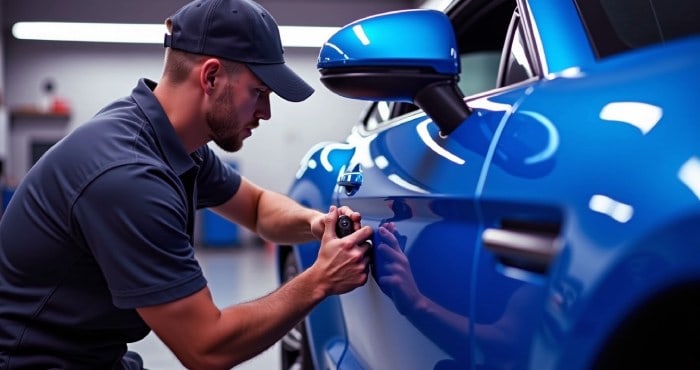
Training and Simulation Technology
The evolution of dent repair technology is transforming not just tools but also technician training. Virtual and augmented reality simulations allow professionals to practice intricate techniques like paintless dent repair (PDR) safely on virtual vehicles, while AI-driven feedback evaluates performance and suggests improvements. This accelerates skill development, enhances precision, and leads to faster, higher-quality repairs that benefit customers.
The dent repair sector is experiencing a technological revolution. Advances such as paintless dent repair, laser technology, robotics, and nanomaterials are enhancing the speed, accuracy, and environmental sustainability of repairs. By keeping up with these developments, car owners can select modern techniques that preserve their vehicle’s value and aesthetics as the industry evolves with even more intelligent and effective repair options.

